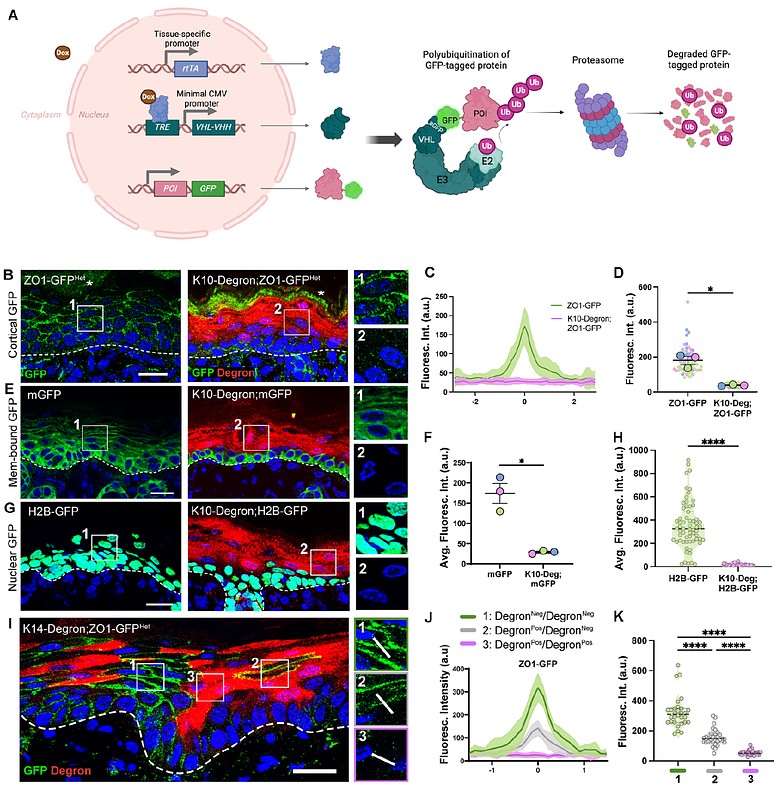Spatio-Temporal Control of GFP-tagged Protein Degradation in the Mouse

Spatio-Temporal Control of GFP-tagged Protein Degradation in the Mouse
Prado-Mantilla, A.; Lechler, T.
AbstractLoss of function studies are a central approach to understanding gene/protein function. In mouse, this often relies upon heritable recombination at the DNA level. This approach is both slow and non reversible, which limits both spatial and temporal resolution of analysis. More recently, degron techniques have been successfully used to quickly and reversibly knockdown proteins, validating this approach. Currently, these systems have been limited by lack of tissue/cell type specificity. Here, we generated mice that allow spatial and temporal control of GFP tagged protein degradation. This DegronGFP line leads to degradation of GFP proteins with different localization patterns and in distinct cell types. Further, it is rapid and reversible. We use DegronGFP to probe the function of the glucocorticoid receptor in the epidermis and demonstrate that it has distinct functions in proliferative and differentiated cells, an analysis that would not have been possible with traditional recombination approaches. We propose that the ability to use GFP knock-in lines for loss of function analysis will provide additional motivation for generation of these useful tools.